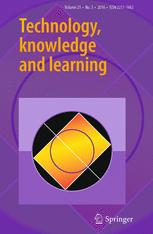Technology is changing the way students interact with knowledge, and open-ended activities are one of the main types of tasks that students engage with in technology-rich environments. However, the amount of guidance needed to promote learning in these environments remains unknown. We explore this issue by focusing on the effects of step-by-step versus generic instructions on student’s exploratory behavior and arousal levels. In this experiment, students completed three computer-based activities within a physics simulation software: building a tower, building a bridge and a free task. We did not find any effect of our experimental manipulation on students’ task performance. We found, however, that detailed instruction induced higher level of activation followed by a relaxation phase and a recovery of the activation level in the last segment of the task (U-shaped curve). On the other hand, generic instructions seemed to lead students into a continuous relaxation pattern along the task (decreasing slope). Moreover, low and high-aroused students appear to be affected by the instructions differently, with high-aroused students at baseline showing less cognitive flexibility. Finally, we observed carryover effects, where types of instruction kept influencing students’ levels of activation in a following open-ended task. We discuss implications of those results for designing learning activities in constructionist, technology-rich environments.
Abstract Download: Abstract in Portuguese and English (PDF)




